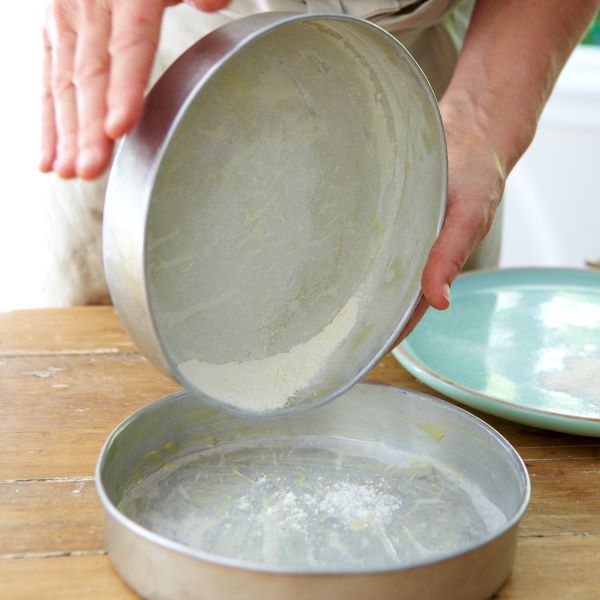Some recipes will ask you to grease and dust your tin with flour if you are baking a delicate cake that is prone to sticking to the tin (like sponge cakes), when the tin is one that you can’t line (like a fluted ring tin), or one with an intricate design (such as a Bundt tin). The flour adds an extra barrier between the mixture and the tin to help stop the mixture from sticking. This butter and flour combination will give a cake a nice crust if done with restraint. You need to coat the pan thoroughly but not thickly - too much butter/oil or flour will leave a patchy coating on the crust of your cake. With ring and Bundt tins, just make sure you also coat the centre tube and pay special attention to any elaborate designs.
The traditional way to do this is to first grease the tin with melted butter or oil. Then add a tablespoon or two of flour to the tin and turn the tin, tapping it as you go, until the whole surface has a light, even coating of flour. Any excess flour should then be removed by sharply tapping the tin on a surface.
Alternately, you can combine both the butter or oil and flour and then apply it. For an average sized tin, combine 15g (½ oz) butter, melted (or 3 teaspoons oil) and 1 teaspoon of plain flour and then brush the tin with this mixture. This method is easier than the traditional method mentioned above, and is particularly good for Bundt tins with intricate designs that can be tricky to coat.
read less







